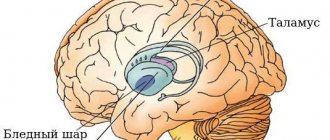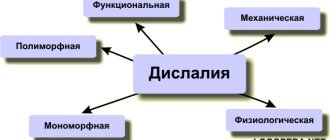Functional dysphonia is a disorder of vocal function in which there is incomplete closure of the vocal folds, but there are no pathological changes in the larynx. This condition develops due to structural features of the vocal apparatus, voice overstrain or chronic fatigue. Treatment should be comprehensive and only under the supervision of an otolaryngologist.
Causes and course of the disease
One of the reasons for the occurrence of functional dysphonia is considered to be structural features of the vocal apparatus, which can be anatomical, congenital and constitutional. In addition, this disease can occur with voice overexertion, asthenic syndrome (chronic fatigue) of various etiologies, as a complication after respiratory diseases, under the influence of psychotraumatic influences. The following factors can have a serious impact on the occurrence of such a disorder:
- Surgical operations on the larynx;
- Forced long silence;
- Hormonal disorders;
- Parkinson's disease;
- Traumatic brain injuries;
- Disturbances in cerebral circulation;
- Myasthenia gravis (muscle weakness).
Functional dysphonia is a reversible disorder. However, with a long course, it can cause the development of atrophic laryngitis, the formation of pseudofold phonation, which sometimes causes hypertrophic (pathological enlargement) changes in the vestibular folds. Hyperkinetic (or spastic, that is, caused by voice overexertion) dysphonia often leads to persistent disruption of microcirculation of the vocal folds, which causes ulcers, polyps, nodules and other pathologies in the larynx.
The causes of spasmodic dysphonia, when the vocal folds move involuntarily, are currently not fully understood.
Hypotonic dysphonia
The word “hypotonicity” means weak tone, in this case, of the muscles of the larynx. In simple terms, the muscles of the speech apparatus contract with insufficient strength, which leads to a weak or hoarse voice, speech becomes illegible and poorly understood.
The cause of hypotonic dysphonia is organic in nature; it develops when the muscles of the larynx themselves or the nerves that control the contraction of these muscles are damaged. Before treatment, an examination by an otolaryngologist and a neurologist is required to exclude pathology. Only with a comprehensive diagnosis can the exact cause of the disease be determined.
Clinical picture
Functional dysphonia has the following forms:
- Hypotonic or hypokinetic, hypofunctional;
- Hypertonic, by analogy hyperkinetic, hyperfunctional;
- Hypo-hypertonic, otherwise called vestibular-fold and false fold voice.
With hypotonic dysphonia, a violation of vocal function occurs due to a decrease in the tone of the vocal folds and some other muscles that take part in the formation of the voice. Patients experience hoarseness and rapid fatigue of the vocal apparatus.
The appearance of hypertonic dysphonia is caused by an increase in the tone of the vocal folds. Voice formation occurs with strong tension in the neck muscles, the voice becomes sharp and very hoarse.
Hypo-hypertonic dysphonia occurs when, along with a decrease in the tone of the vocal folds, phonation is formed at the level of the vestibular folds, which then becomes the cause of their hypertrophy.
Aphonia is the absence of a sonorous voice, but a whispered speech is preserved. Aphonia or psychogenic dysphonia occurs mainly under the influence of psychogenic factors. Mutational dysphonia occurs during the period of mutation (age-related changes) of the voice.
Friends! Timely and correct treatment will ensure you a speedy recovery!
Spasmodic dysphonia is characterized by tremors, severe hoarseness, and slurred speech. It can occur in the abductor (when the vocal folds open) and adductor (the vocal folds close) form.
Make an appointment right now!
Call us by phone or use the feedback form
Sign up
GBOU "NIKIO im. L.I. Sverzhevsky" of the Moscow Department of Health
Functional dysphonia is a violation of vocal function, characterized by a violation of the closure of the vocal cords in the absence of pathological changes in the larynx.
The causes of a functional voice disorder can be constitutional, anatomical, congenital features of the vocal apparatus, voice overstrain, traumatic factors, previous respiratory diseases, asthenic syndrome of any etiology. Hypotonic disorders can also develop against the background of prolonged silence, as well as after surgical interventions on the larynx or with atrophy of the vocal folds. Anxiety and depressive disorders can contribute to the development of functional dysphonia. Hormonal disorders, most often thyroid diseases, play a significant role in the occurrence of functional dysphonia. Other causes are neurological diseases such as Parkinson's disease and myasthenia gravis, traumatic brain injury, cerebrovascular accident, etc.
Functional changes are reversible, but in some cases they can lead to organic changes in the larynx.
The clinical picture of functional dysphonia is caused by a violation of the vocal function of varying degrees of severity.
Hypotonic dysphonia is a violation of vocal function caused by a decrease in the tone of the vocal folds and other muscles involved in voicing. Rapid voice fatigue and aspirated hoarseness are noted.
Hypertonic dysphonia is a violation of vocal function caused by increased tone of the vocal folds. Phonation is carried out with tension in the neck muscles, the voice is sharp, and hoarseness is pronounced.
Hypo-hypertonic dysphonia (vestibular-fold voice) is a violation of vocal function due to a decrease in the tone of the vocal folds with the formation of phonation at the level of the vestibular folds with the subsequent development of their hypertrophy.
Aphonia is the absence of sonority of the voice while maintaining whispered speech.
Psychogenic dysphonia or aphonia is a disorder of vocal function, the leading etiological factor of which is considered psychogenic.
Mutational dysphonia is a voice disorder that occurs during the period of mutation.
Spasmodic dysphonia is a voice disorder characterized by tense and compressed intermittent phonation, tremors, hoarseness, and impaired speech intelligibility. There are abductor and adductor forms. During speech, twitching of the diaphragm is noted. Articulation disorders and changes in the psycho-emotional sphere are diagnosed. Clinical and neurological examination reveals organic pathology in the form of dystonic syndromes (such as writer's and blepharospasm, torticollis, etc.).
In the process of diagnosing and treating voice function disorders, a multidisciplinary approach is required with the involvement of a neurologist, endocrinologist, psychiatrist and phonopedist in the rehabilitation process.
Treatment of functional dysphonia
The approach to the treatment of functional dysphonia should be comprehensive. It is necessary to influence etiopathogenetic factors: treatment of general somatic diseases, somatomorphic disorders, sanitation of foci of chronic infection.
The prognosis for functional dysphonia is often favorable. Persistent impairment of vocal function and a long-term course lead to a deterioration in the patient’s communication.
Prevention of vocal function disorders consists, first of all, in maintaining vocal hygiene, developing correct phonation skills, and developing the speaking and singing voice, especially in people of voice-speech professions. Timely diagnosis and treatment of general somatic diseases leading to the development of dysphonia are of great importance.
Diagnostics
A characteristic symptom of functional dysphonia is prolonged impairment of voice function.
Voice deterioration can occur after a viral infection, severe vocal stress, or as a result of a deterioration in general health. To diagnose voice disorders, there are special texts that need to be read for 40 minutes. In addition, there is psychological testing that is performed in order to identify somatoform disorders (perceived by the patient). While listening to speech, experts pay attention to strength, timbre, diction, posture, the condition of the neck muscles and some other signs. In order to make a final diagnosis, it is necessary to conduct a number of studies: laryngosmicroscopy, acoustic and spectral computer analysis of the voice, electromyography, glotography, and assess the function of external respiration.
In hypotonic dysphonia, incomplete closure of the glottis is observed during phonation. The hypertonic form is characterized by hyperemia (redness) of the mucous membrane, hypertrophy of the vestibular folds, as well as excessive closure of the vocal folds. In some cases, during phonation, you can see the closure of not the vocal folds, but the vestibular folds.
Organic dysphonia
With organic dysphonia, various pathologies of the speech apparatus are present: inflammation of the tonsils, cysts in soft tissues, neurological disorders, etc. All diseases can be confirmed by clinical examination of the patient. If such a diagnosis is made, mandatory treatment by a specialized specialist is required: otolaryngologist, neurologist, oncologist and other doctors, depending on the type of pathology.
Consultation with a speech therapist is necessary to restore normal speech in case of organic dysphonia. In severe cases, several courses may be required; rehabilitation is prescribed only when treating the underlying pathology.
Treatment
Treatment should be comprehensive and include both local, which consists of sanitizing foci of infection, and general somatic treatment. It is aimed at increasing the endurance of the voice-producing apparatus and developing stable phonation skills. Treatment without the use of medications includes:
- Carrying out phonopedia - pedagogical education of correct voice production;
- Breathing and articular gymnastics;
- Acupuncture and physiotherapy, which include procedures such as dynamic currents, electrophoresis on the larynx area, amplipulse (pulse current treatment)
- Psychotherapy;
- Massage of the collar area.
During drug therapy, stimulant drugs are prescribed. In cases of severe and persistent hypophonia, implantation therapy is used.
What is Dysphonia? Causes and methods of treatment.
Sazhin Alexander Valerievich – PhoniatristHead of the Department of Otorhinolaryngology
Specialty: phoniatrist, otorhinolaryngologist, ENT surgeon, otoneurologist.
Education: 1991 - Graduate of the Pediatric Faculty, Perm State Medical Institute, Perm. 1992 - internship in pediatrics, Perm State Medical Institute, Perm. 1995 – primary specialization in otorhinolaryngology, Novokuznetsk State Institute for Advanced Medical Studies, Novokuznetsk. 2003 – thematic improvement in pediatrics, State Educational Institution of Higher Professional Education Perm State Medical Academy named after. E.A. Wagner (PGMA), Perm. 2003 – thematic improvement in clinical lymphology, State Educational Institution of Higher Professional Education Perm State Medical Academy named after. E.A. Wagner, Perm. 2003, 2008, 2011, 2013 – thematic improvements in otorhinolaryngology, Perm State Medical Academy, Perm. 2013 – practical improvement on the topic “Functional endoscopic rhinosinus surgery”, Kazan State Medical Academy, Kazan. 2012-2014 – residency in the specialty “Otorhinolaryngology”, Perm State Medical Academy. 2015, May - IV Russian master class “Modern functional rhinosurgery”, Moscow, Federal State Budgetary Institution “Polyclinic No. 1”, Department of Administration of the President of the Russian Federation. 2016, November – educational and practical master class “Otoneurology. Modern methods of diagnosing dizziness with a practical course,” Department of Otorhinolaryngology, Russian National Research Medical University named after. N.I. Pirogov (Russian Research Medical Institute named after N.I. Pirogov), Moscow. 2021, October - thematic improvement in phoniatrics at the FMBA of Russia (Federal Medical and Biological Agency of Russia), Moscow. 2021, November – master class “Otoneurology. Modern methods for diagnosing dizziness", Department of Otorhinolaryngology, Russian National Research Medical University named after. N.I. Pirogova, Moscow. 2021, May – VI Russian master class with international participation “Modern functional Rhinosurgery”, Moscow.
Main services:
- reception of adults and children from 0+;
- diagnosis, treatment and prevention of diseases of the vocal apparatus;
- endoscopic methods of diagnosis and treatment of ENT organs;
- surgical treatment of the nose, paranasal sinuses, larynx, pharynx;
- reconstructive surgery of ENT organs;
- radio wave surgery, cryotherapy.










